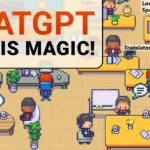Creating distinct and engaging character voices is a crucial aspect of storytelling that can truly bring a narrative to life. Whether you are writing a novel, a screenplay, or simply practicing your storytelling skills, mastering the art of character voices can significantly enhance the experience for your audience.
In a recent session focusing on character voice practice, we delved into crafting voices for various characters in a story. The exercise involved embodying the personas of different animals to bring out their unique traits through voice modulation.
Firstly, we explored the majestic lion, portrayed as an old King guarding his domain. The lion’s voice exuded authority and power, with a resounding “Who goes there?” setting the tone for his regal presence.
Next, we transitioned to a sneaky mouse that had ventured into the lion’s cave. The mouse’s voice was portrayed as timid and small, uttering a hesitant “Oh, it’s no one,” capturing its meek demeanor effectively.
The wise owl, portrayed as a stoic advisor to the lion, was characterized by a calm and knowledgeable voice, reflecting its sage-like qualities. The owl’s role as a mentor to the lion was emphasized through its composed and wise voice.
Lastly, we delved into crafting the voice of the villain, with suggestions of a slithery snake or cunning Fox. The villain’s voice was sinister and chilling, with a maniacal laughter adding a menacing touch. The cunning Fox, in particular, delivered a chilling line with a mix of threat and malevolence, marking a stark contrast to the other characters’ voices.
Mastering character voices is an essential skill for any storyteller, allowing them to create a rich tapestry of personalities that captivate audiences. By practicing and honing different voices for various characters, storytellers can elevate their narratives and immerse listeners in captivating worlds filled with diverse personalities and emotions.












